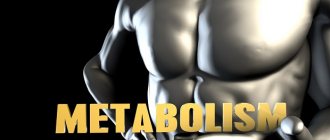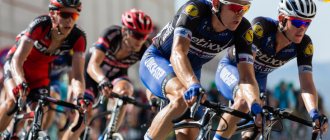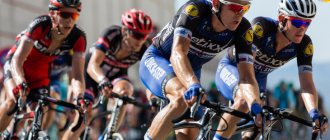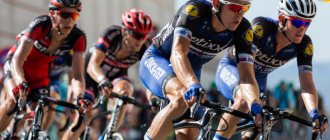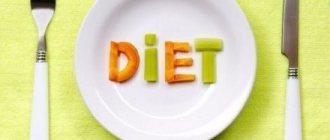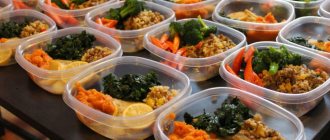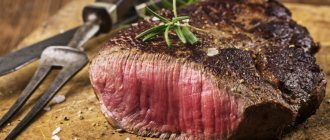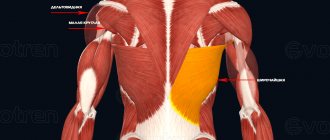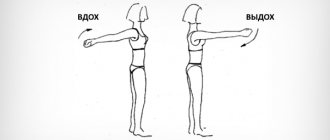© belchonock — depositphotos.com
Share:
Carbohydrates play an important role in proper nutrition and distribution of nutrient balance. People who care about their own health know that complex carbohydrates are preferable to simple ones. And that it is better to eat food for longer digestion and fuel energy throughout the day. But why exactly? How do the processes of assimilation of slow and fast carbohydrates differ? Why should you eat sweets only to close the protein window, and why is it better to eat honey only at night? To answer these questions, we will consider in detail the metabolism of carbohydrates in the human body.
What are carbohydrates for?
In addition to maintaining optimal weight, carbohydrates in the human body perform a huge range of work, the failure of which leads not only to obesity, but also to a host of other problems.
The main tasks of carbohydrates are to perform the following functions:
- Energy – approximately 70% of calories come from carbohydrates. In order for the oxidation process of 1 g of carbohydrates to be realized, the body requires 4.1 kcal of energy.
- Construction – take part in the construction of cellular components.
- Reserve - create a depot in the muscles and liver in the form of glycogen.
- Regulatory – some hormones are glycoproteins in nature. For example, hormones of the thyroid gland and pituitary gland - one structural part of such substances is protein, and the other is carbohydrate.
- Protective - heteropolysaccharides take part in the synthesis of mucus, which covers the mucous membranes of the respiratory tract, digestive organs, and genitourinary tract.
- Take part in cell recognition.
- They are part of the membranes of red blood cells.
- They are one of the regulators of blood clotting, as they are part of prothrombin and fibrinogen, heparin (source - textbook “Biological Chemistry”, Severin).
For us, the main sources of carbohydrates are those molecules that we get from food: starch, sucrose and lactose.
Cellulose
Cellulose (fiber) is a complex carbohydrate that forms the walls of plant cells. Herbivores have digestive enzymes that help digest cellulose, breaking it down into its constituent glucose molecules, which are absorbed by the intestines and used for energy. The human body does not produce enzymes that can digest fiber, which is also called plant fiber, which is excreted from our body unchanged. Nevertheless, consuming them is very useful, and their elimination indicates good functioning of the large intestine.
Stages of saccharide breakdown
Before considering the features of biochemical reactions in the body and the influence of carbohydrate metabolism on athletic performance, we will study the process of breakdown of saccharides with their further transformation into the very glycogen that athletes so desperately extract and spend during preparation for competitions.
Stage 1 – preliminary digestion with saliva
Unlike proteins and fats, carbohydrates begin to break down almost immediately after entering the oral cavity. The fact is that most of the products entering the body contain complex starchy carbohydrates, which, under the influence of saliva, namely the amylase enzyme included in its composition, and the mechanical factor are broken down into simple saccharides.
Stage 2 – influence of stomach acid on further breakdown
This is where stomach acid comes into play. It breaks down complex saccharides that are not exposed to saliva. In particular, under the action of enzymes, lactose is broken down into galactose, which is subsequently converted into glucose.
Stage 3 – absorption of glucose into the blood
At this stage, almost all fermented fast glucose is directly absorbed into the blood, bypassing the fermentation processes in the liver. Energy levels increase dramatically and the blood becomes more saturated.
Stage 4 – satiety and insulin response
Under the influence of glucose, the blood thickens, which makes it difficult to move and transport oxygen. Glucose replaces oxygen, which causes a protective reaction - a decrease in the amount of carbohydrates in the blood.
Insulin and glucagon enter the plasma from the pancreas.
The first opens transport cells for the movement of sugar into them, which restores the lost balance of substances. Glucagon, in turn, reduces the synthesis of glucose from glycogen (consumption of internal energy sources), and insulin “perforates” the main cells of the body and places glucose there in the form of glycogen or lipids.
© VectorMine — depositphotos.com
Stage 5 – Carbohydrate Metabolism in the Liver
On the way to complete digestion, carbohydrates encounter the body’s main defender – liver cells. It is in these cells that carbohydrates, under the influence of special acids, are linked into the simplest chains - glycogen.
Stage 6 – Glycogen or Fat
The liver can only process a certain amount of monosaccharides in the blood. The increasing insulin level forces her to do this as soon as possible. If the liver does not have time to convert glucose into glycogen, a lipid reaction occurs: all free glucose is converted into simple fats by binding with acids. The body does this in order to leave a reserve, but due to our constant nutrition, it “forgets” to digest, and the glucose chains, turning into plastic fatty tissue, are transported under the skin.
Stage 7 – secondary cleavage
If the liver has coped with the sugar load and was able to convert all carbohydrates into glycogen, the latter, under the influence of the hormone insulin, manages to be stored in the muscles. Further, under conditions of lack of oxygen, it is broken down back to the simplest glucose, not returning to the general bloodstream, but remaining in the muscles. Thus, bypassing the liver, glycogen supplies energy for specific muscle contractions, while increasing endurance (source - Wikipedia).
This process is often called the “second wind”. When an athlete has large reserves of glycogen and simple visceral fats, they will only be converted into pure energy in the absence of oxygen. In turn, the alcohols contained in fatty acids will stimulate additional vasodilation, which will lead to better susceptibility of cells to oxygen in conditions of its deficiency.
Polysaccharides
Polysaccharides are complex compounds of a large number of monosaccharides. Digestible polysaccharides are called starch, these include starch, inulin, glycogen.
During absorption by the body, starch polysaccharides are broken down into simple sugars. This process takes a long time and occurs mainly in the intestines, which is why starch polysaccharides are often called “slow carbohydrates”. Their share in the daily amount of digestible carbohydrates should be about 75–80%. Starch accounts for the bulk of digestible polysaccharides. The largest amount of this substance is found in products made from wheat flour (pasta, bread), cereals, potatoes and legumes.
Features of metabolism according to GI
It is important to understand why carbohydrates are divided into simple and complex. It's all about their glycemic index, which determines the rate of breakdown. This, in turn, triggers the regulation of carbohydrate metabolism. The simpler the carbohydrate, the faster it gets to the liver and the higher the likelihood of it being converted into fat.
An approximate table of the glycemic index with the general composition of carbohydrates in the product:
| Name | GI | Number of carbohydrates |
| Dry sunflower seeds | 8 | 28.8 |
| Peanut | 20 | 8.8 |
| Broccoli | 20 | 2.2 |
| Mushrooms | 20 | 2.2 |
| Leaf lettuce | 20 | 2.4 |
| Lettuce | 20 | 0.8 |
| Tomatoes | 20 | 4.8 |
| Eggplant | 20 | 5.2 |
| Green pepper | 20 | 5.4 |
© IrinaPotter — depositphotos.com. Glycemic index of foods
Features of metabolism according to GN
However, even foods with a high glycemic index are not able to disrupt the metabolism and functions of carbohydrates in the same way that the glycemic load does. It determines how heavily the liver will be loaded with glucose when consuming this product. When a certain GL threshold is reached (about 80-100), all calories consumed in excess of the norm will be automatically converted into triglycerides.
An approximate table of glycemic load with total calories:
| Name | GN | Calorie content |
| Dry sunflower seeds | 2.5 | 520 |
| Peanut | 2.0 | 552 |
| Broccoli | 0.2 | 24 |
| Mushrooms | 0.2 | 24 |
| Leaf lettuce | 0.2 | 26 |
| Lettuce | 0.2 | 22 |
| Tomatoes | 0.4 | 24 |
| Eggplant | 0.5 | 24 |
| Green pepper | 0.5 | 25 |
© designer491 — depositphotos.com. Calculation of glycemic load
Insulin and glucagon response
In the process of consuming any carbohydrate, be it sugar or complex starch, the body triggers two reactions at once, the intensity of which will depend on the previously discussed factors and, first of all, on the release of insulin.
It is important to understand that insulin is always released into the blood in impulses. This means that one sweet pie is as dangerous for the body as 5 sweet pies. Insulin regulates blood thickness. This is necessary so that all cells receive a sufficient amount of energy without working in hyper- or hypo-mode. But most importantly, the speed of its movement, the load on the heart muscle and the ability to transport oxygen depend on the thickness of the blood.
The release of insulin is a natural reaction. Insulin makes holes in all the cells in the body that can perceive additional energy and locks it in them. If the liver has coped with the load, glycogen is placed into the cells; if the liver cannot cope, then fatty acids enter the same cells.
Thus, the regulation of carbohydrate metabolism occurs solely due to insulin emissions. If there is not enough of it (not chronically, but one-time), a person may experience a sugar hangover - a condition in which the body requires additional fluid to increase blood volumes and thin it by all available means.
The second important factor at this stage of carbohydrate metabolism is glucagon. This hormone determines whether the liver needs to work with internal sources or external sources.
Under the influence of glucagon, the liver releases ready-made glycogen (not broken down), which was obtained from internal cells, and begins to collect new glycogen from glucose.
It is the internal glycogen that insulin distributes throughout the cells at first (source - textbook “Sports Biochemistry”, Mikhailov).
© VectorMine — depositphotos.com. Regulating Blood Sugar Levels
Subsequent energy distribution
The subsequent distribution of carbohydrate energy occurs depending on the type of build and fitness of the body:
- In an untrained person with a slow metabolism. When glucagon levels decrease, glycogen cells return to the liver, where they are processed into triglycerides.
- At the athlete. Glycogen cells, under the influence of insulin, are massively locked in the muscles, providing a reserve of energy for the next exercise.
- A non-athlete with a fast metabolism. Glycogen returns to the liver, transported back to glucose levels, after which it saturates the blood to the borderline level. By this, it provokes a state of exhaustion, since despite sufficient nutrition with energy resources, the cells do not have the appropriate amount of oxygen.
Recipes for healthy eating
Halibut in a frying pan
- 13.1 g Protein
- 12.9 g Fat
- 8.6 g Carbohydrates
- 200.5 kcal
25-30 min.
- #avocado
- #second course
- #lemon
- #flour
- #dinner
- #roasting
- #olive oil
- #tomato
- #vegetable oil
- #fish
- #spices
- #dinner
Other recipes
Stock
Antibody test for coronavirus (COVID-19)
from 2000 a
Rapid test for coronavirus (COVID-19)
Results within 25 minutes from the moment the biomaterial is submitted
1600a
Coronavirus (COVID-19) antibody test at home
from 4200 a
Coronavirus (COVID-19) test at home
from 4350 a
Coronavirus (COVID-19) test
2100 a
